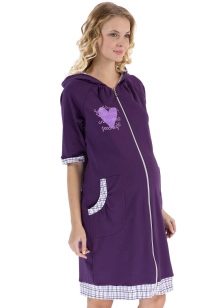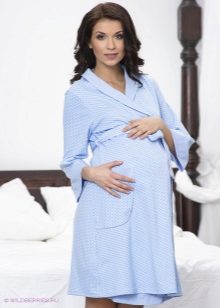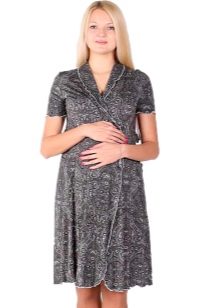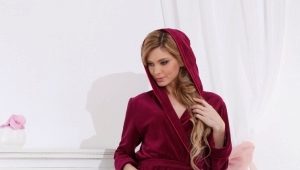Bathrobes for pregnant women in the hospital
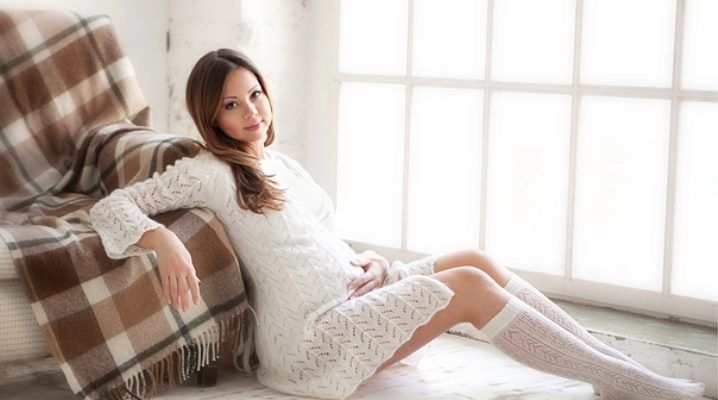
The life of a mother of a baby for some time becomes very homely, it is absolutely impossible to do without a bathrobe. And this period begins already in the hospital. Therefore, you need to choose a bathrobe to wear it with pleasure in advance at 7-8 months of pregnancy.
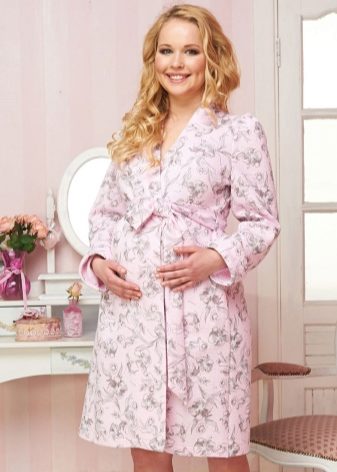
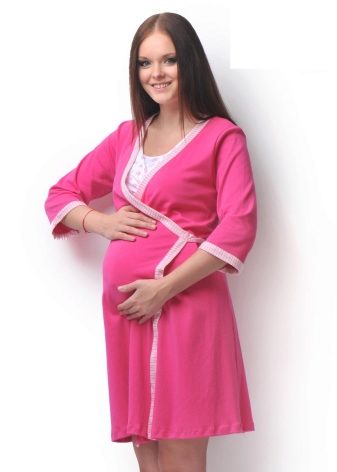
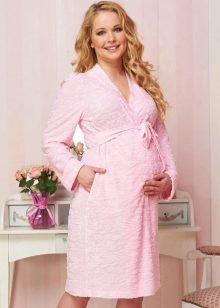
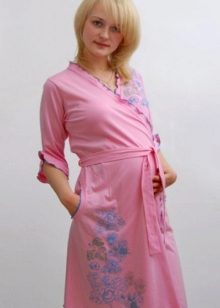
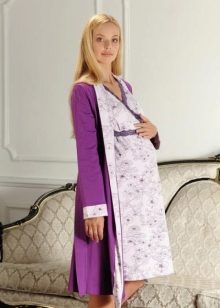
Is it necessary
When everything is clear with the maternity hospital, you can go to its website. There are recommendations for collecting an alarm case and the requirements of the maternity hospital for women's clothing in the prenatal and postnatal period. If pregnant women can wear what they like, then moms have their own requirements for clothes. Some maternity hospitals offer hospital gowns and gowns to women, while in some places, women in labor can take their own clothes.
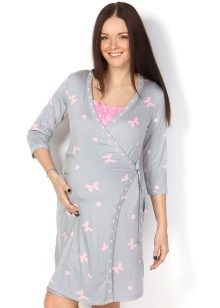
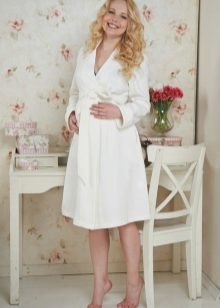
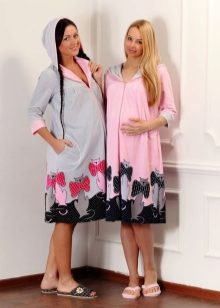
Hospital clothes are not very tasteful, but they are clean and sterile. Unfortunately, due to frequent washing and disinfection, dressing gowns and shirts become hard, shapeless, quickly torn and become unusable. That's why usually, after giving birth, mothers are given only shirts to be changed daily, and bathrobes are offered to be taken from home.
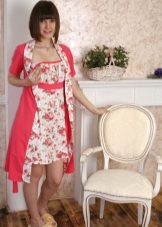
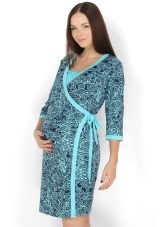
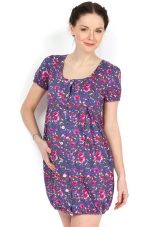
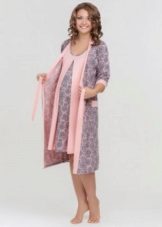
Since the mother is not always in the ward, she can go out into the corridor and see her relatives, she needs a dressing gown. It replaces the usual clothes, warms and, of course, emphasizes individuality and style. It is better to have a pair of gowns: simple and comfortable to wear in the ward, as well as tighter and more closed for going out into the corridor, dining room and meeting with relatives who will certainly want to visit you.
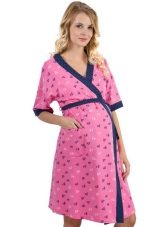
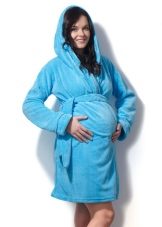
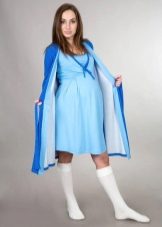
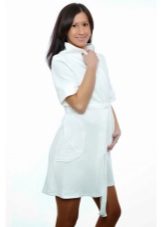
Which bathrobe is better to take
Ready-made kits for women in labor often put sterile kits from a dressing gown and a shirt. In practice, they can only come in handy during childbirth. Such a disposable kit does not require washing, but this is its only advantage. This option is not suitable for every day: it is not too beautiful, makes feeding difficult and does not warm at all. Yes, and the kids in the ward next to their mother acquire the first immune experience, because in ordinary life it is impossible to create absolute sterility.
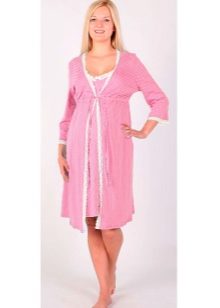
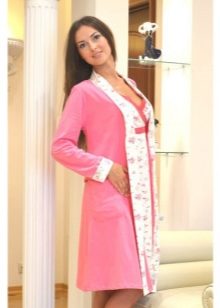
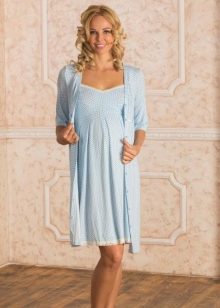
Which bathrobe to take with you depends on the season and your preferences. In a warm room next to the baby, you will be comfortable in a simple short dressing gown made of natural fabrics with short sleeves. Its fabric should not be stiff, fleecy, have stripes, appliqués and decorations, but to go out into the corridor you may well put on a more elegant model. Refuse lace peignoirs: hardly anyone will appreciate them, and enticing dressing gowns are impractical in the maternity hospital.
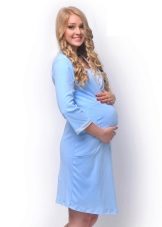
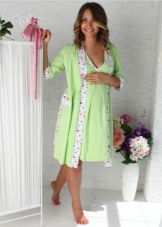
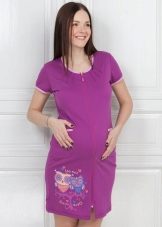
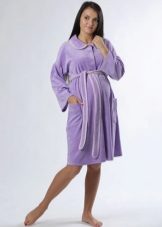
Varieties of bathrobes
Outside the room, mother needs to protect herself from drafts and cold, therefore, the gown should cover the chest tightly. BUT the rooms are quite warm, so you can wear comfortable cropped options with short sleeves. Among the styles of dressing gowns for pregnant women and mothers, models with a smell on the belt and with a zipper are considered the most relevant. They can be quickly removed and put on, they are practical.
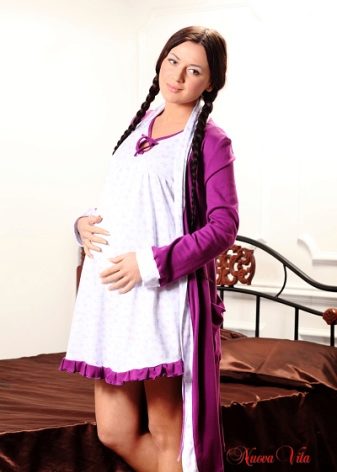
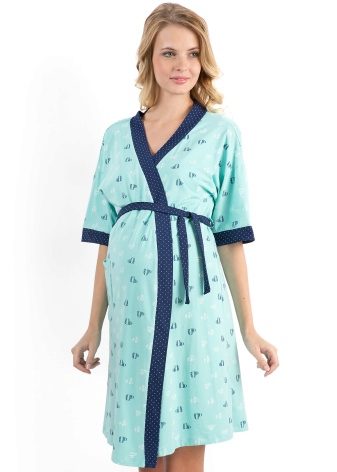
Models only on the belt often swing open on a round tummy. And fastening and unfastening buttons is not so convenient and longer than using a zipper. For the same reason, you should not take models with buttons.
Even expectant mothers definitely need to prepare a nightgown or shirt for the hospital. The emphasis should be on choosing the shirt that you will wear after childbirth.The hospital gives out changeable underwear, but these things will come in handy at home, so you can buy them in advance. For pregnant and lactating mothers, there are special paired sets of shirts and bathrobes, or you can collect them separately. In paired sets, the length of the robe will be correct (it completely covers the shirt), and the combination of color and fabric will be perfect.
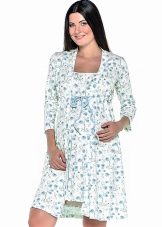
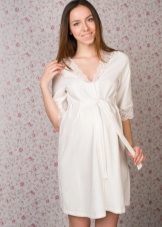
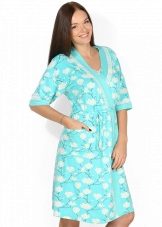

Differences between "nursing" and "pregnant" nightgowns in a free silhouette. A deep neckline or incision will help the mother quickly release the chest from the clothes and give the baby. If the waist is made on such models, then under the chest and loosely to the body. Such underwear should be made of natural materials, preferably without ruffles and decorations, seams on the chest, so as not to irritate the skin.
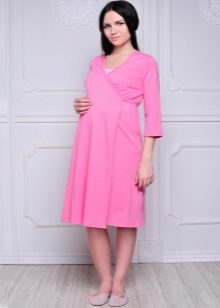
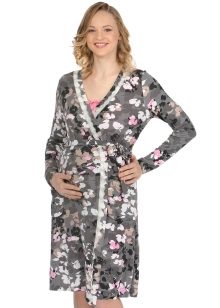
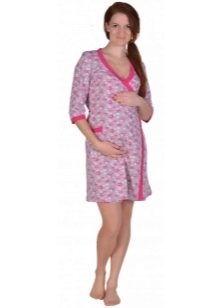
Often a shirt is worn both as underwear under a dressing gown, and as clothes for a night's sleep. Therefore, it is useful to buy a couple of shirts, taking into account the weather.: summer ones can be on shoulder straps, but winter ones are made of denser and warmer fabric and with short sleeves. It is better to choose loose, without cuffs and tight elastic bands.
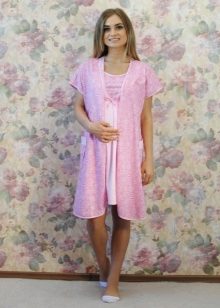
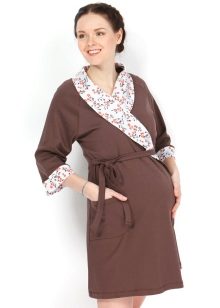
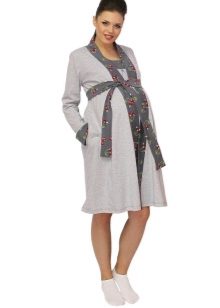
fabrics
Definitely choose clothes and underwear from breathable and natural fabrics!
They will be pleasant both to you and to the delicate skin of the baby. Non-natural fabrics have a specific smell that the baby may not like, and such materials can also cause allergies or discomfort in delicate baby skin. Mommy will also be more comfortable, because she will wear a dressing gown and a shirt almost all day.
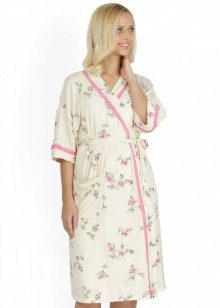
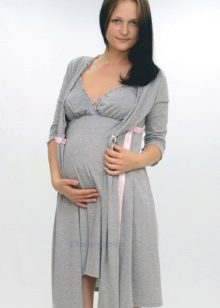
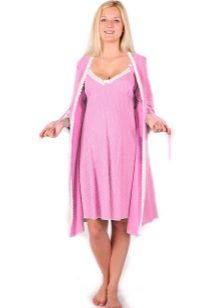
The easiest way to make sure your robe is made from the right fabric is to run the palm of your hand over the material. If the villi remain on the arm, then such a dressing gown cannot be used to care for a newborn. A lot of villi can be found in fabrics made from low-quality threads (they are made of short fibers and poorly twisted) or those that have been in storage for a long time.
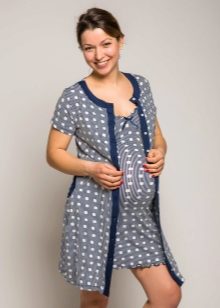
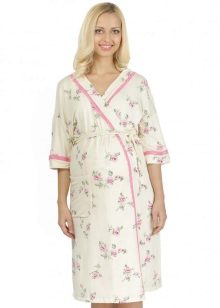
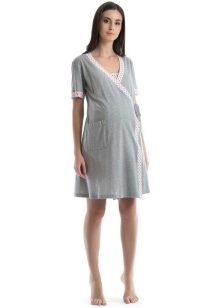
The most popular fabrics are cotton, linen and bamboo. If cotton and linen are very soft, delicate, wash quickly and dry well, then linen is a more capricious material. Products made from it have a characteristic grayish tint, quickly wrinkle and are slightly heavier in weight than other eco-friendly fabrics. Of the latest developments, kapiton can be distinguished: it evaporates moisture well, is practical, does not lose shape after numerous washes.
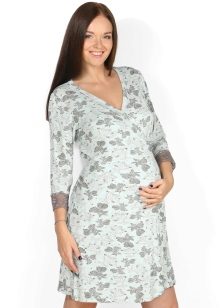
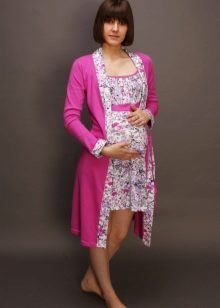
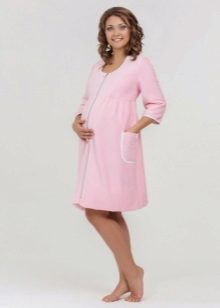
These fabrics are versatile, but especially good in the heat. But for cool rooms, bathrobes made of plush and flannel are relevant. Terry bathrobes are also suitable for cold winters. Of course, it is heavier, but still made of natural materials, it perfectly absorbs moisture and stores heat.
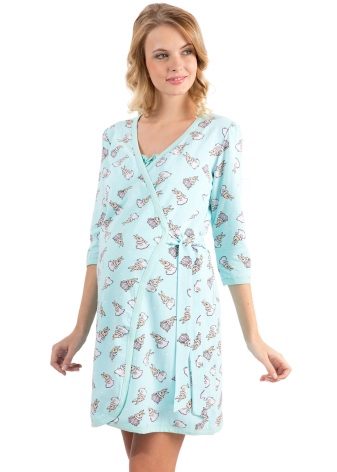
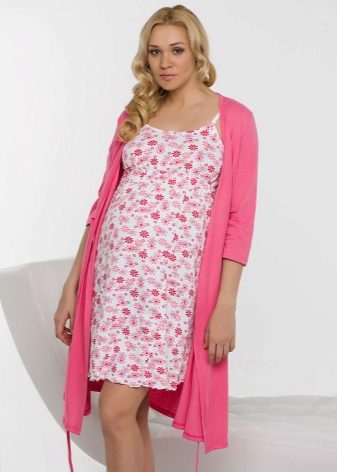
Interesting models
-
Special models for expectant mothers and breastfeeding women often differ from the "regular" dressing gowns. Smell, zippers and incisions help to “facilitate” access to the chest. Designers now suggest making cuts on the back of the robe so that it can be easily pulled forward if the clasp fails.
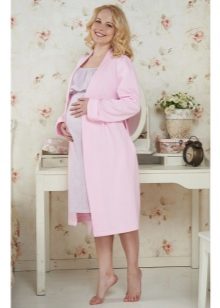
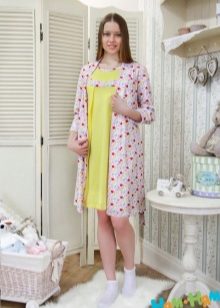
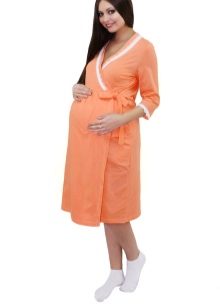
-
Loose short gowns and shirts are especially comfortable: they are practical, allow you to spend less time on examination at the gynecologist and in the treatment room, you can quickly take them off and on, they do not get tangled in your legs and will not “sweep” the floor. But very short ones will not fit: they do not close the shirt, they will not warm in winter and it will be difficult, unaesthetic to bend over in them.
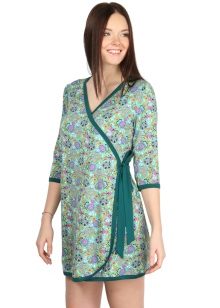
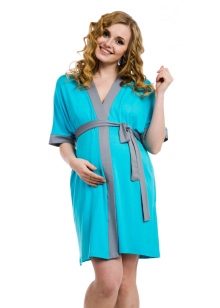
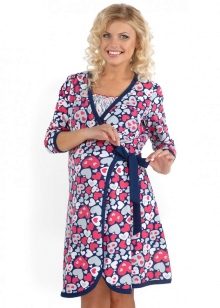
-
The ideal length of such bathrobes is from the middle of the thigh to the knee, the length of the sleeve is from a third to three quarters. It will be convenient to fasten them for a pregnant mom, they fit perfectly on any figure, and are also practical and safe. You can choose in simple stores, specialized for expectant mothers. In the latter, the requirements for materials and convenience are higher, and they serve for years, becoming loved.
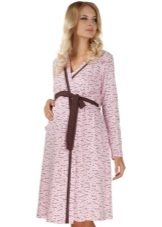
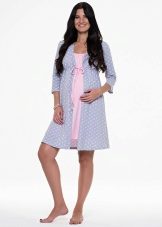
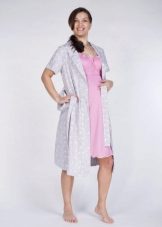
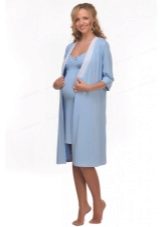
-
Do not try to save a lot on a dressing gown and a shirt: this is your future “uniform”, choose beautiful and pleasant clothes for yourself, not forgetting about naturalness and comfort. Such a choice is often pleasing to the eye and very uplifting for women, because we simply adore everything beautiful and functional. And in your favorite bathrobe, household chores become so pleasant and easy! This is very important, because in the first months the baby will need mother's love, care and good mood!
